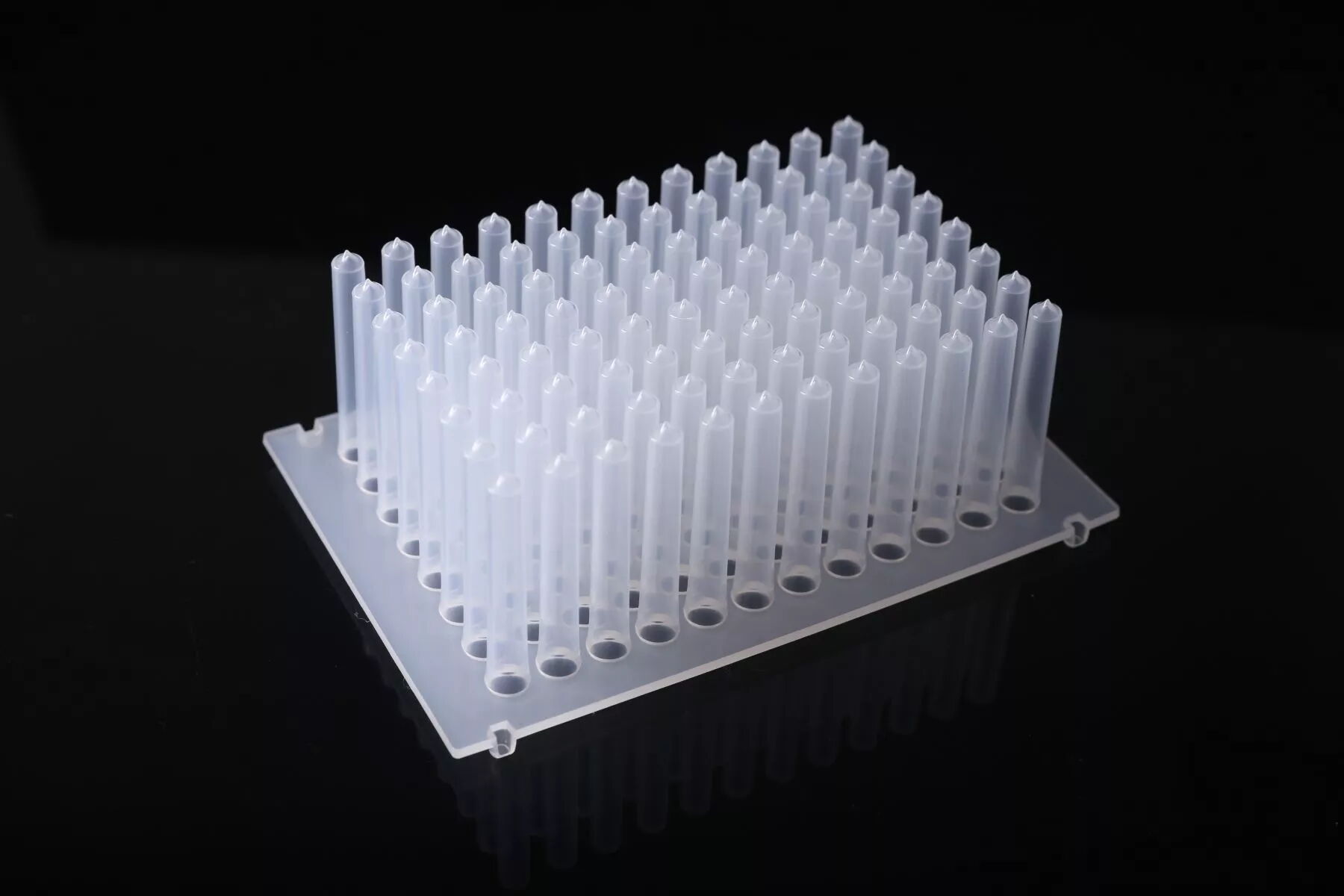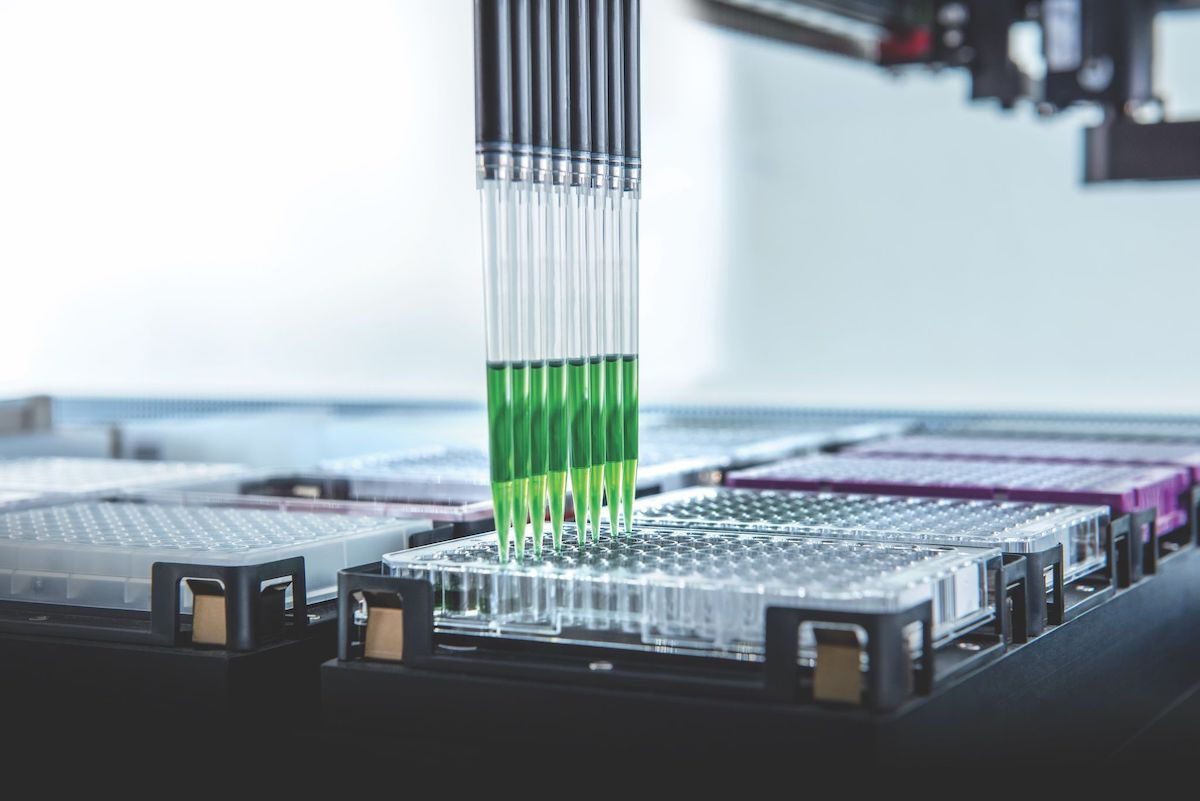Innovative Direction of Centrifuge Tube Design
Jul 31, 2024
On this page
The centrifuge tube is a tubular sample container, which can be sealed or capped. It is a small volume test tube often used in the laboratory, and is usually used for experimental operations such as centrifugal operation, sample storage, and replacement liquid. Centrifugal tube size is different, can be selected according to the needs of the experiment. Centrifugal tubes play a vital role in scientific research and medical laboratories, where their main function is to separate different substances based on density.
In recent years, significant advances have been made in centrifugal tube design, which have significantly improved the functionality, durability and efficiency of centrifugal tubes. This article will discuss in detail the latest innovations in centrifugal tube design and look at the future direction of this important laboratory instrument to better understand how to select centrifugal tubes, their types, uses, and best practices. An important development in centrifugal tube design is the improvement of materials. In recent years, manufacturers have increasingly turned to high-quality plastics such as polypropylene (PP) and ultra-transparent polyethylene (PET) to significantly improve the durability and stability of centrifugal tubes. These new materials provide the strength and reliability required in high-speed centrifugal operations, withstanding centrifugal forces of up to tens of thousands of revolutions per minute (RPM) while maintaining shape and integrity.
Polypropylene (PP) is a widely used material today, whose superior temperature and chemical resistance make it perform well under various experimental conditions. Polypropylene has a melting point of up to 160°C, which makes it suitable for experiments requiring high-temperature disinfection or treatment. In addition, polypropylene has good corrosion resistance to a variety of chemicals (such as acids, bases and organic solvents), which can effectively prevent the impact of chemical reactions on the sample. This characteristic makes polypropylene centrifuge tubes widely used in biological, chemical and clinical laboratories. On the other hand, ultra-transparent polyethylene (PET) has a unique advantage in guaranteeing sample visibility. The material's high optical transparency ensures that researchers can clearly observe the state and stratification of the sample before and after centrifugation, thus improving the accuracy and efficiency of the operation. Ultra-transparent polyethylene not only performs well in terms of visibility, but also in terms of impact resistance and chemical resistance, making it an ideal choice, especially in experiments that require close monitoring of sample changes. With the increasing demand for user-friendly laboratory equipment, the design of centrifugal tubes is also increasingly focused on ergonomic features. Modern centrifuge tubes are designed with ease of use and safety in mind, including easy-to-grip covers, secure sealing mechanisms, and prominent labeling areas for sample identification and classification. These design improvements not only improve the comfort of operation, but also effectively reduce the error and safety hazards that may occur during the experiment.
Special Centrifugal Tubes for a Variety of Applications
In recent years, the specialization of centrifugal tubes has developed rapidly to meet specific research and diagnostic needs. These special centrifugal tubes include:
Ultra pigging: Provides better sample visibility for experiments that require observation of the state of the sample.
PCR tube: Used for nucleic acid amplification experiments, designed with specific specifications suitable for PCR process to ensure the accuracy of experimental results.
Gradient centrifuge tube: Used for precise density gradient separation to help researchers achieve higher resolution and accuracy during separation. As the digitization of laboratory equipment accelerates, centrifuge tube manufacturers are beginning to integrate radio frequency identification (RFID) technology into their products. The application of this technology greatly improves the transparency and reliability of laboratory operations. RFID technology enables the centrifuge tube to automatically record and track sample information during use, thereby reducing human error and improving the accuracy and traceability of experimental data. Looking ahead, centrifugal tube design will continue to make breakthroughs in innovation. With the advancement of 3D printing technology, the production of customized centrifugal tubes will become more efficient and flexible. In addition, the integration of smart sensors and Internet of Things (IoT) technologies could revolutionize the way centrifugal tubes are monitored and controlled. These emerging technologies are expected to improve the precision of centrifugal tubes, enable higher levels of automation, and drive a new era of laboratory centrifugation. 1. The centrifugal speed should be gradually accelerated, and the centrifuge door should be opened after the centrifuge tube is completely stopped when the centrifuge stops.
2. When the centrifugal tube is used, attention should be paid to the bottom of the centrifugal tube with a fixed adapter on the centrifuge to ensure safety.
3. During sampling, the same centrifugal tube should be avoided to avoid interfering with the measurement results.
4. The bearing range of the centrifugal tube, that is, the capacity of the sample cannot exceed the limit of the centrifugal tube, otherwise it will cause damage to the centrifugal tube. In particular, the centrifugal tube must not exceed its volume.
5. The centrifugal tube should not be used for a long time, generally not more than 12 months. By drawing on previous research results, combined with the latest developments in centrifugal tube design, the laboratory can further optimize its workflow, increase research efficiency, and remain competitive in the context of continuous advances in science and technology. For more information and the latest developments in centrifugal tube design, please visit our News and updates page.
In recent years, significant advances have been made in centrifugal tube design, which have significantly improved the functionality, durability and efficiency of centrifugal tubes. This article will discuss in detail the latest innovations in centrifugal tube design and look at the future direction of this important laboratory instrument to better understand how to select centrifugal tubes, their types, uses, and best practices. An important development in centrifugal tube design is the improvement of materials. In recent years, manufacturers have increasingly turned to high-quality plastics such as polypropylene (PP) and ultra-transparent polyethylene (PET) to significantly improve the durability and stability of centrifugal tubes. These new materials provide the strength and reliability required in high-speed centrifugal operations, withstanding centrifugal forces of up to tens of thousands of revolutions per minute (RPM) while maintaining shape and integrity.
Polypropylene (PP) is a widely used material today, whose superior temperature and chemical resistance make it perform well under various experimental conditions. Polypropylene has a melting point of up to 160°C, which makes it suitable for experiments requiring high-temperature disinfection or treatment. In addition, polypropylene has good corrosion resistance to a variety of chemicals (such as acids, bases and organic solvents), which can effectively prevent the impact of chemical reactions on the sample. This characteristic makes polypropylene centrifuge tubes widely used in biological, chemical and clinical laboratories. On the other hand, ultra-transparent polyethylene (PET) has a unique advantage in guaranteeing sample visibility. The material's high optical transparency ensures that researchers can clearly observe the state and stratification of the sample before and after centrifugation, thus improving the accuracy and efficiency of the operation. Ultra-transparent polyethylene not only performs well in terms of visibility, but also in terms of impact resistance and chemical resistance, making it an ideal choice, especially in experiments that require close monitoring of sample changes. With the increasing demand for user-friendly laboratory equipment, the design of centrifugal tubes is also increasingly focused on ergonomic features. Modern centrifuge tubes are designed with ease of use and safety in mind, including easy-to-grip covers, secure sealing mechanisms, and prominent labeling areas for sample identification and classification. These design improvements not only improve the comfort of operation, but also effectively reduce the error and safety hazards that may occur during the experiment.
Special Centrifugal Tubes for a Variety of Applications
In recent years, the specialization of centrifugal tubes has developed rapidly to meet specific research and diagnostic needs. These special centrifugal tubes include:
Ultra pigging: Provides better sample visibility for experiments that require observation of the state of the sample.
PCR tube: Used for nucleic acid amplification experiments, designed with specific specifications suitable for PCR process to ensure the accuracy of experimental results.
Gradient centrifuge tube: Used for precise density gradient separation to help researchers achieve higher resolution and accuracy during separation. As the digitization of laboratory equipment accelerates, centrifuge tube manufacturers are beginning to integrate radio frequency identification (RFID) technology into their products. The application of this technology greatly improves the transparency and reliability of laboratory operations. RFID technology enables the centrifuge tube to automatically record and track sample information during use, thereby reducing human error and improving the accuracy and traceability of experimental data. Looking ahead, centrifugal tube design will continue to make breakthroughs in innovation. With the advancement of 3D printing technology, the production of customized centrifugal tubes will become more efficient and flexible. In addition, the integration of smart sensors and Internet of Things (IoT) technologies could revolutionize the way centrifugal tubes are monitored and controlled. These emerging technologies are expected to improve the precision of centrifugal tubes, enable higher levels of automation, and drive a new era of laboratory centrifugation. 1. The centrifugal speed should be gradually accelerated, and the centrifuge door should be opened after the centrifuge tube is completely stopped when the centrifuge stops.
2. When the centrifugal tube is used, attention should be paid to the bottom of the centrifugal tube with a fixed adapter on the centrifuge to ensure safety.
3. During sampling, the same centrifugal tube should be avoided to avoid interfering with the measurement results.
4. The bearing range of the centrifugal tube, that is, the capacity of the sample cannot exceed the limit of the centrifugal tube, otherwise it will cause damage to the centrifugal tube. In particular, the centrifugal tube must not exceed its volume.
5. The centrifugal tube should not be used for a long time, generally not more than 12 months. By drawing on previous research results, combined with the latest developments in centrifugal tube design, the laboratory can further optimize its workflow, increase research efficiency, and remain competitive in the context of continuous advances in science and technology. For more information and the latest developments in centrifugal tube design, please visit our News and updates page.
Previous: Characteristics and Experimental Application of Pipette Tip for Gel Sampling
Next: Why is Balancing Centrifuges Important?



